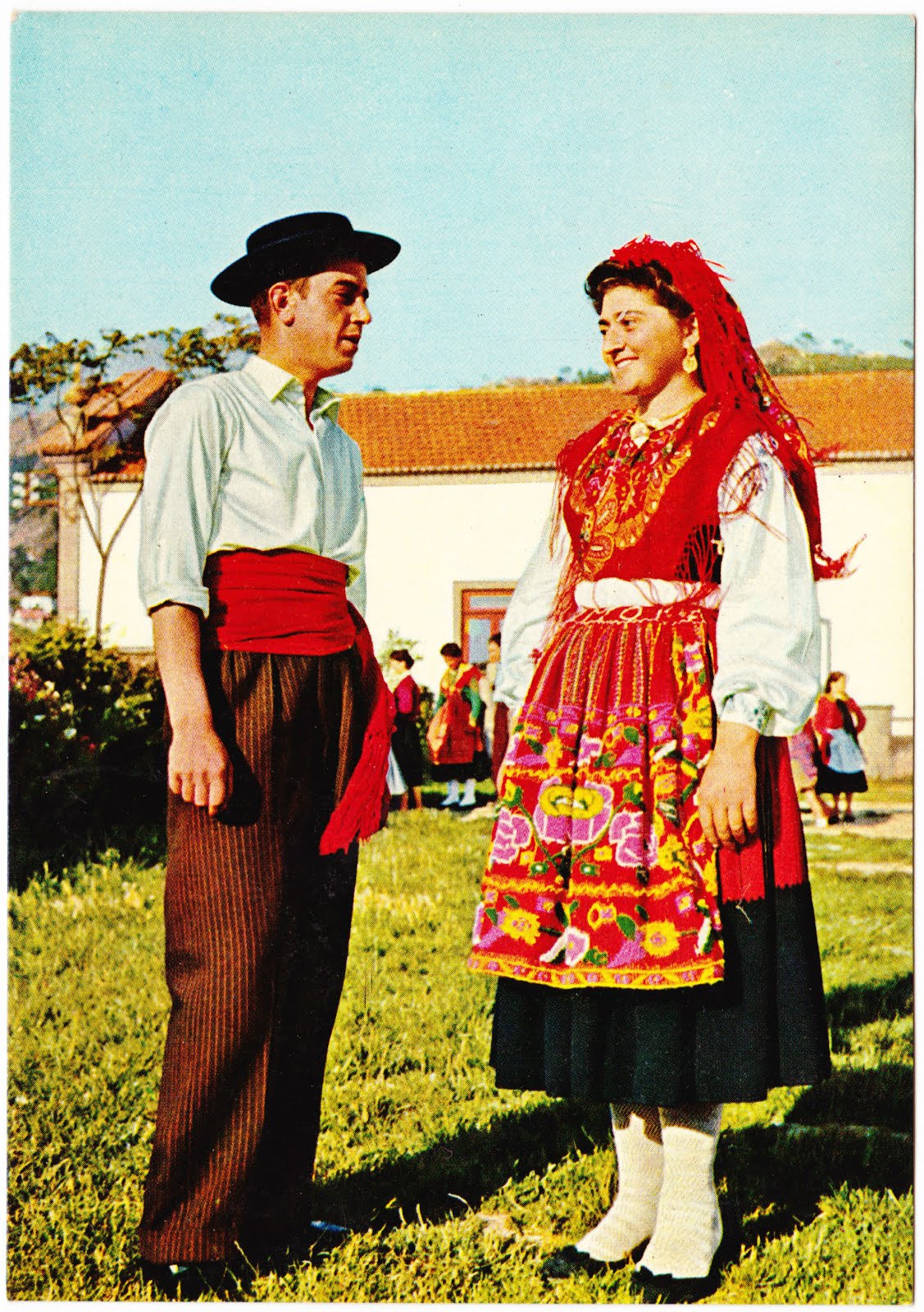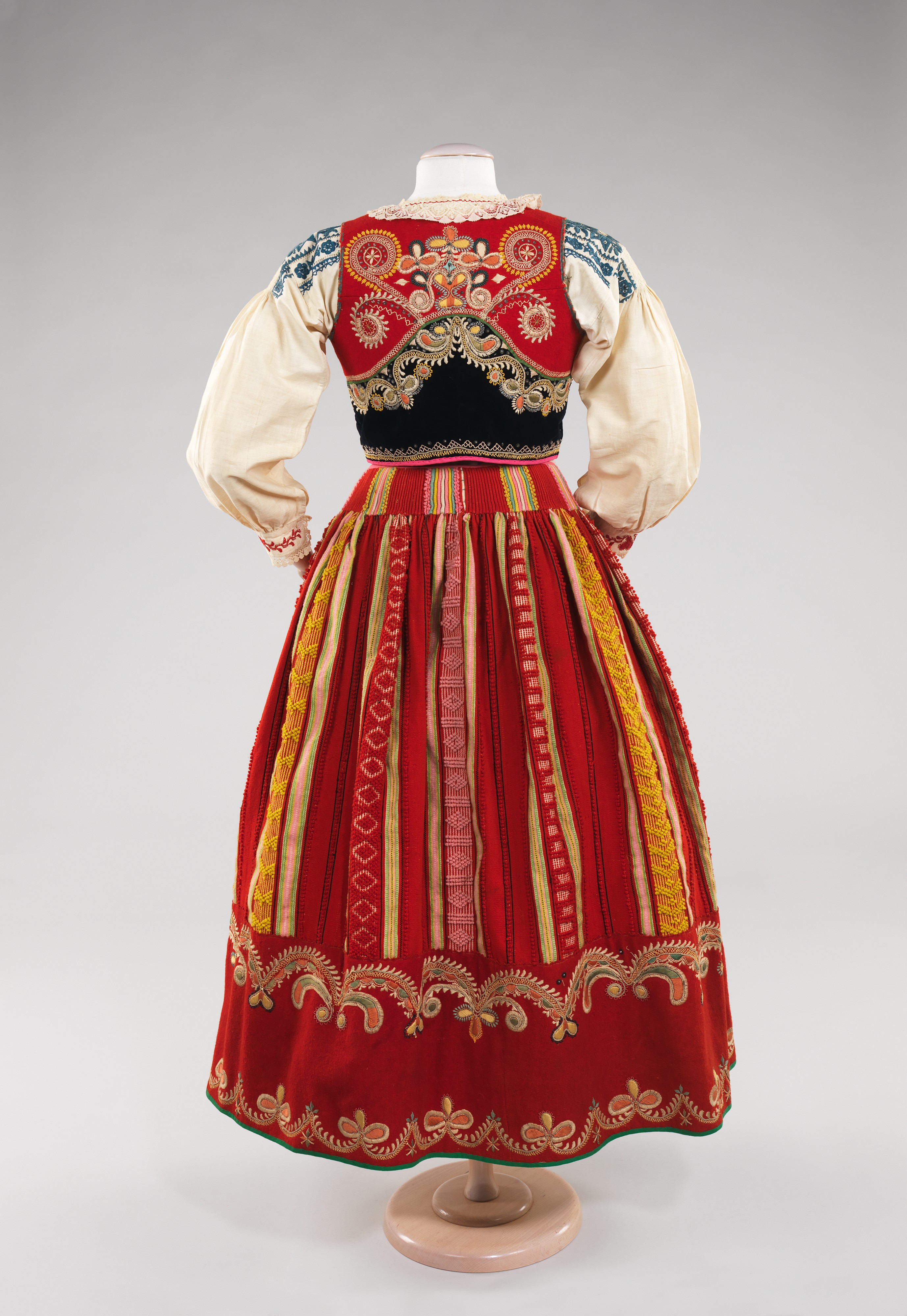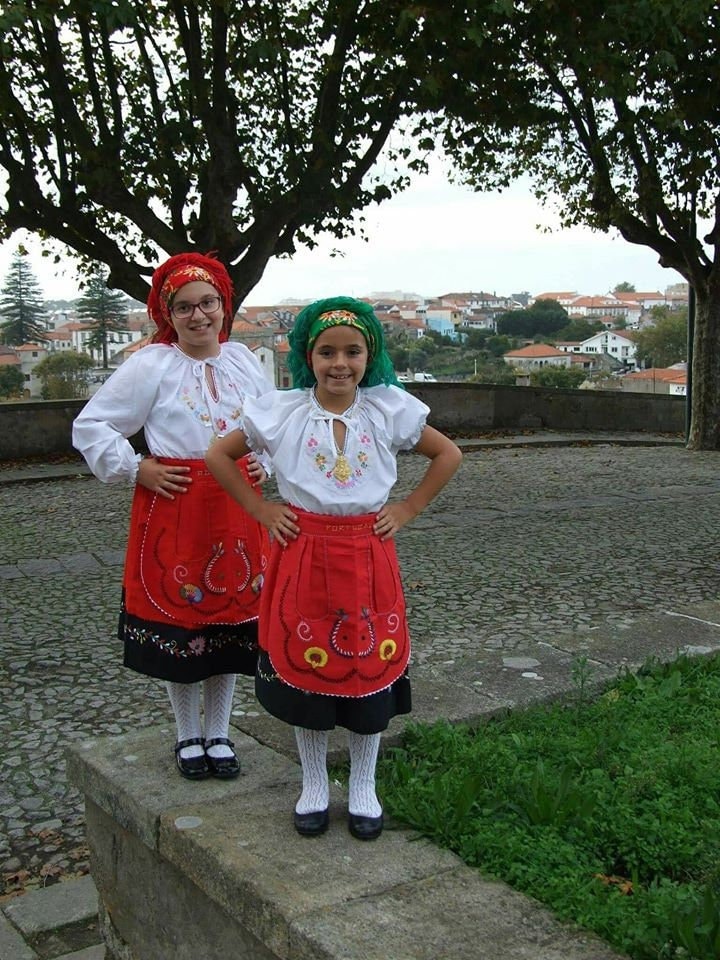
Women / Girls Wearing Traditional Portuguese Dress, Folk Festival in Portugal Editorial Photo
Understated. While Portuguese people take pride in their appearance, their look tends to be understated. And this is true of a night out. Smart casual is all that's required when dining out or visiting the theatre - no need to pack your best frock or sky-high heels.

Women wearing traditional northern Portuguese clothing ,everything else is made of real gold
Buy authentic Portuguese items online with shipping to all 50 United States.

Papergreat 5 old postcards featuring traditional outfits from around the world
Music and arts play a prominent role in Portuguese culture, and traditional folk dances called Ranchos Folclóricos stem from the country's rural areas and farming communities. Jubilant and energetic, Ranchos Folclóricos sound very different from fado, and these partner dances are either performed in couples or as groups and are still.

Ensemble Portuguese The Metropolitan Museum of Art
The first layer of the ladies' costume is a cotton or linen chemise, with full sleeves, beautifully embroidered in traditional styles, and white 'pantaloons', with lace at the knee, long white socks and even embroidered slippers or dancing shoes.

Portuguese Costumes
Nowadays, people only wear traditional dress at Portugal's many festivals and during carnival. However, in the remoter areas of northern Portugal traditional dress was more common up until the early 20th century.

Traje tradicional. Grupo folclórico de Madeira. Portugal Funchal, Costumes Around The World
Jul 06, 2023 Portuguese Culture Clothing: A Symbol of Tradition and Style Portugal, a country steeped in history and rich in cultural heritage, boasts a vibrant and diverse clothing tradition that reflects its unique identity.

Malaysians Must Know the TRUTH Celebrating Malaya being Conquered
1. Traditional Portuguese Dress: Threads of Heritage Portugal has a long and fascinating history that has influenced its traditional clothing. Throughout the centuries, various civilizations and cultural exchanges have shaped the styles and designs of Portuguese attire.

Folclore Português FolkCostume Minho, Portugal Algarve, Cultures Du Monde, World Cultures
Portugal is a predominantly Roman Catholic country with a close-knit family ethic. Its rich culture results from many influences, including Celtic, Lusitanian,. Participants in colorful dress sing traditional songs and perform time-honored dances accompanied by instruments such as guitar, mandolin, bagpipes, accordion, violin, and drums.

Pin by Любовь on COSTUMI TRADIZIONALI NEL MONDO Portuguese clothing, Traditional dresses
They dress in an embroidered kilt, linen shirt, a brown vest, leather boots, woolen socks, hat and use two sticks (palos) to dance. Another popular dance is performed by the Caretos de Podence, traditional characters from the Northeast of Trás-os-Montes and Alto Douro region, which hark back to the times of the Celts, in pre-Roman times.

Pin en Traditional Clothes and Culture
Portugal has a rich traditional folklore ( Ranchos Folclóricos ), with great regional variety. Many cities and towns have a museum and a collection of ancient monuments and buildings. Many towns have at least a cinema, some venues to listen to music and locations to see arts and crafts.

1000+ images about Folk CostumePortugal on Pinterest Wool, Girls and Brides
Key materials included: Wool - The most ubiquitous material due to Portugal's mainly cool climate. Provided warmth and structure to garments. Used to make thick woolen capes, vests, trousers and accessories. Linen - A lighter summer staple across regions. Known for being breathable and lightweight. Commonly used to make shirts, dresses and scarves.

Épinglé par Jane Kurtz sur FOLK Fashion Robe traditionnelle, Costume folklorique, Costume
Traditional garments such as the red and green stocking cap of the Alentejo cattleman still exist, and the samarra (a short jacket with a collar of fox fur) and cifões (the equestrian's leather chaps) survive.

a group of women in colorful clothing walking down a street
Culture Name Portuguese Orientation Identification. The name "Portugal" derives from a Roman or pre-Roman settlement called Portus Cale (the modern city of Porto) near the mouth of the Douro River. The Romans referred to this region as the province of Lusitania, and the prefix Luso (meaning "Portuguese") is still used in some contexts.

Traditional Portuguese Traditional dresses, Traditional outfits, Folk dresses
Also Read: 25 Mouthwatering Portuguese Desserts You Must Try. Clothing. The Portuguese people don't especially stand out in the fashion and clothing design department like their fellow Southern European neighbors. Even though not widely used, the Portuguese have their own traditional outfits that are evocative of Portuguese culture.

Typical Portuguese Costume for Children Etsy Australia
Portuguese traditional dress varies regionally, but it typically consists of bouffant long skirts for women and shortened leggings, waist coasts and sombreros for men. Known as saia, women's skirts display vibrant checkered or striped patterns, most often in red and white, and the outfit is completed with a kerchief to cover the hair.

Épinglé par Carmo Gomes sur Portugal Costume traditionnel, Tenue traditionnelle, Vêtements de
Clothing and Fashion Portuguese national clothes are noted for their bright and vivid colours. Traditional Portuguese dress consists of bouffant skirts made from saia (chequered or striped fabrics) for women, and calsas, short leggings, sombreros, and waistcoats for men.